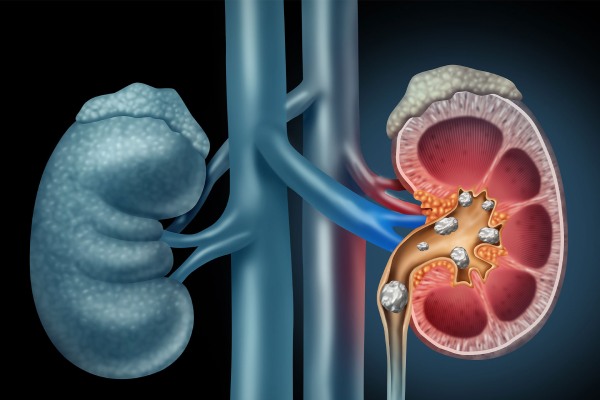The painful and uncomfortable condition known as kidney stones is brought on by the hard buildup of minerals and salts in the kidneys. Many different remedies have been discovered to alleviate this ailment over the years. But kidney stone therapy has changed drastically with the introduction of robotic surgery.
Patient outcomes and recuperation times are both enhanced by robotic surgery’s minimally invasive and extremely precise technique. Kidney stone robotic surgery is discussed in this article along with its advantages, technique, and recuperation time.
How Do Kidney Stones Occur?
Crystals called kidney stones occur when salts and minerals in urine build up to a certain point in the kidneys. The four most prevalent kinds of kidney stones are cystine, struvite, calcium, and uric acid. If the stones are little enough, they might go undetected as they go through the urinary system. On the other hand, larger stones have the potential to block the urine flow, which can lead to terrible discomfort, nausea, and infection.
Medication, ureteroscopy, percutaneous nephrolithotomy, and extracorporeal shock wave lithotripsy are the conventional approaches to treating kidney stones. There are restrictions on these treatments, notwithstanding their effectiveness. The advent of robotic surgery, which offers a less invasive option with many benefits, is a major step forward in medical technology.
The Importance of Robotic Surgery for the Removal of Kidney Stones
Robotic surgery is a cutting-edge method of minimally invasive surgery that uses robots to help surgeons do intricate and precise operations. Surgeons can remove stones or unblock obstructions with remarkable precision and minimal injury to surrounding tissue using this strategy in kidney stone treatment.
The Mechanism
A three-dimensional, high-definition picture of the surgical site is shown to the surgeon operating the robotic surgery system from a console. Through microscopic incisions, the robotic arms carrying the surgeon’s delicate surgical tools are implanted. With a wider range of motion and more precision, these robotic arms imitate the surgeon’s hand movements. More effective stone removal is possible with improved visibility and the use of smaller incisions, which decrease the risk of complications, pain, and scarring.
The da Vinci Surgical System is renowned for its reliability and accuracy, making it the most popular robotic system for kidney stone surgery. By giving surgeons greater control and flexibility, this device has transformed urological procedures, particularly for patients with complicated kidney stones.
A Review of Robotic Kidney Stone Surgery and Its Advantages
Both surgeons and patients choose robotic surgery for kidney stones over traditional surgical approaches due to its numerous advantages. Among these advantages are:
- Invasiveness to a Minimum: Robotic surgery is less intrusive than open surgery, which calls for a big cut. There is less harm to the body because the robotic arms are implanted through tiny punctures. Less discomfort and faster recovery after surgery are the results of this.
- Improving Accuracy: The extreme accuracy offered by robotic systems makes them ideal for the removal of kidney stones, which can pose serious risks to nearby anatomical landmarks like nerves and blood veins. Unintentional harm to nearby tissues is less likely thanks to the system’s improved visibility and fine-tuned control.
- Delayed Hospital Readmission: The average length of hospital stay for patients having robotic kidney stone surgery is far less than that of patients having more conventional open surgery. Depending on the procedure’s intricacy, patients are often discharged within 24 to 48 hours.
- Recovery in Less Time: The less tissue damage and smaller incisions used in robotic surgery allow for a quicker recovery. Unlike after conventional open surgery, which can take months, most patients can resume their regular activities within a few weeks.
- Decreased Potential for Infection and Its Consequences: Robotic surgery reduces the danger of infections, bleeding, and other issues that can develop from larger surgical incisions due to its minimally intrusive nature. A less invasive and more successful method of removing kidney stones is made possible by this.
When Should I Get a Robot to Remove Kidney Stones?
It is not always necessary to resort to robotic surgery as a primary method of treating kidney stones. Large or complicated stones, reoccurring stones, or patients who have not responded to ESWL or ureteroscopy are the usual candidates for this procedure. Robotic surgery offers a safer alternative to traditional open surgery for stones placed in hard-to-reach regions, enabling doctors to address the stones with less risk.
Robotic surgery has the potential to help patients with specific medical issues, such obesity or a history of abdominal procedures, because the device can navigate tricky anatomy.
Conclusion
A state-of-the-art alternative to conventional kidney stone surgery, robotic surgery has many benefits. Patients coping with complicated kidney stones may find it an interesting choice due to its minimally invasive nature, improved precision, and faster recovery. The use of robotics in the treatment of urological disorders is already showing promising results, and this trend is only going to accelerate as robotic technology improves.








